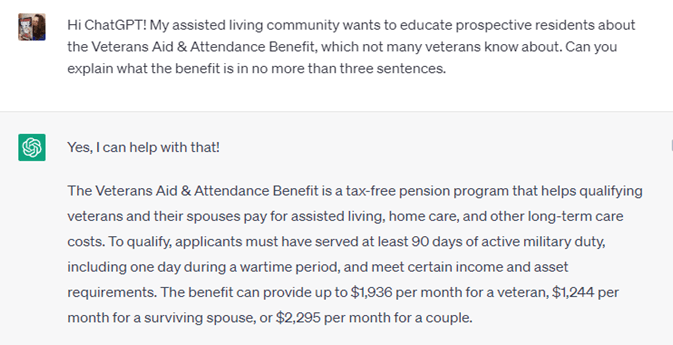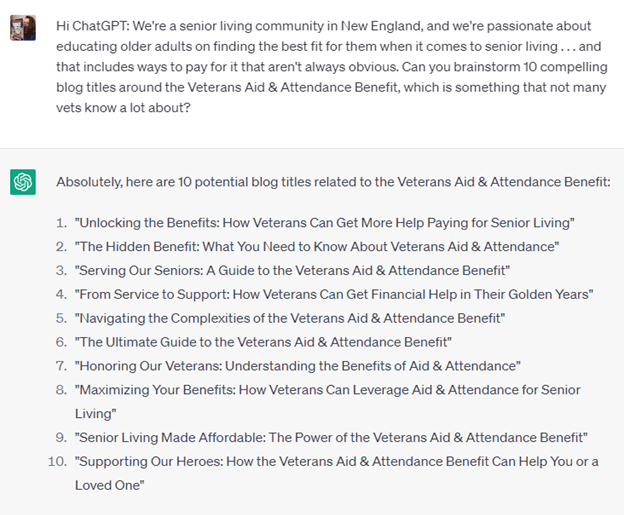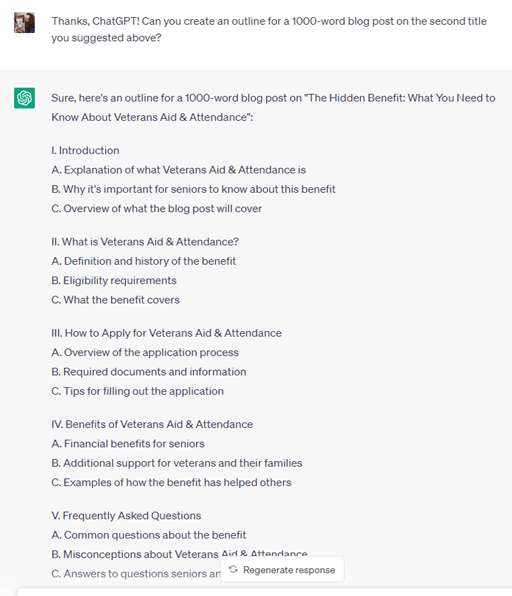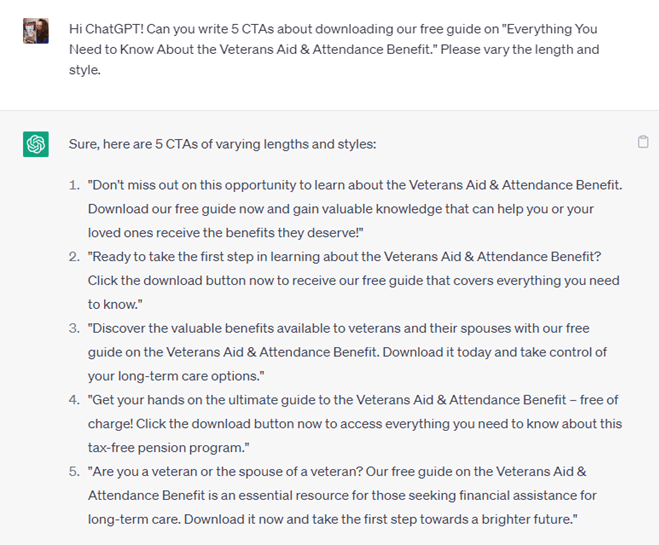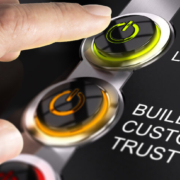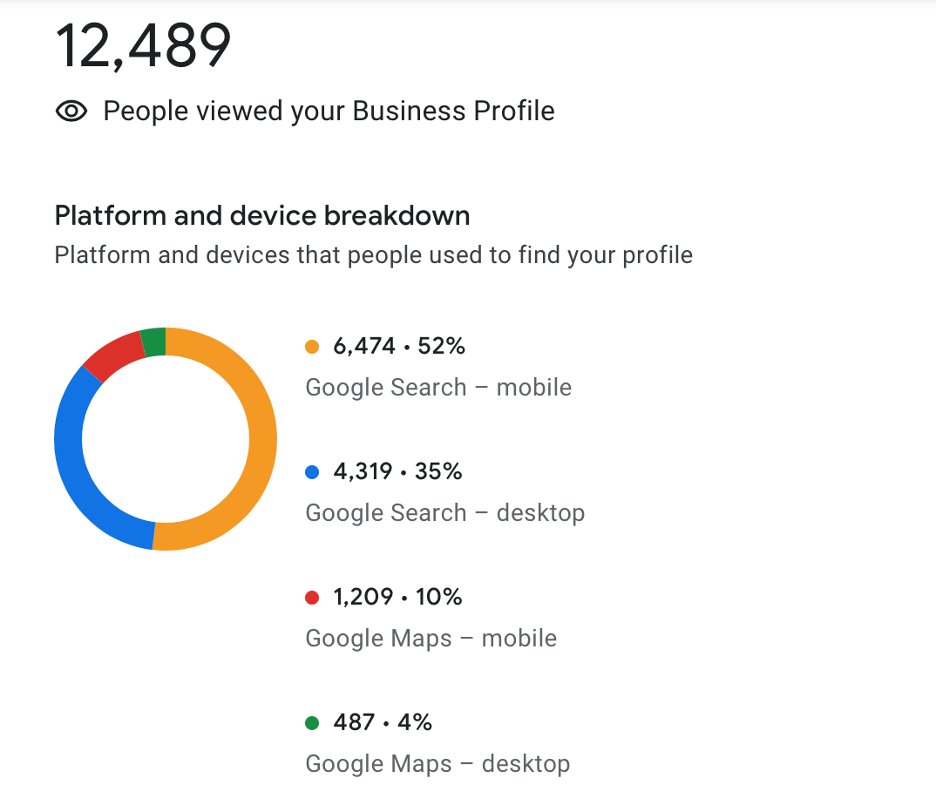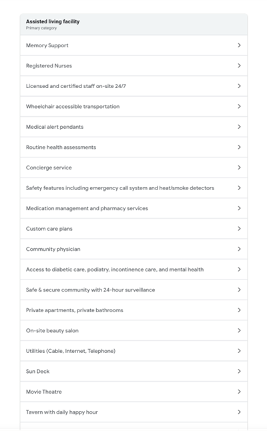Senior Living Marketing: Time for a Mid-Year Checkup
June is an excellent time to review your senior living marketing strategy. If you do this mid-year checkup now, you can hit the ground running as we enter Q3.
What exactly should you review during your mid-year checkup?
Don’t worry! We got you.
In this article, we’ll cover the following:
- Website marketing review tips
- Social media marketing review tips
- Email marketing review tips
- Bonus: Three analytic points that marketers often overlook (but you won’t!)
Let’s get to it.
Senior Living Website Marketing: What To Check
How’s the overall user experience (UX) been over the last six months?
Remember, your senior living website serves as your central marketing hub. You must constantly monitor its performance—and how everyday users respond to and interact with the site.
Things to check:
- Is the site easy to navigate and accessible to everyone? Don’t underestimate or ignore WCAG: Web Content Accessibility Guidelines. And don’t assume your site is still accessible simply because it was the last time you checked. It’s amazing how quickly accessibility can break down as people add or revise new pages. Performing an audit is a good best practice.
- Does the site load quickly across all devices? People have little patience for slow sites and may depart your site if takes longer than a few seconds to load.
- Is the mobile site just as user-friendly as the desktop site? The mobile version of your site needs to be just as easy to read, skim, and navigate as the desktop version.
These last 2 items also factor into good SEO. Slow-loading websites and poorly performing mobile sites will cause your search engine ranking to take a hit, so don’t ignore these issues.
Does your site convert anonymous traffic into leads—and leads into move-ins?
It doesn’t make sense to continue pumping out more of the same content if you have no idea if any of it is working. The most successful communities close the loop with their marketing and sales efforts so that they know what content converts.
Things to check:
- Review stats on form submissions, click-through rates, and phone calls. How do things compare year-over-year? If stats are down, do you know why?
- Analyze landing page performance. Where could you optimize better? Should you run an A/B test?
- Evaluate CTA performance and lead capture mechanisms. Sometimes making a small change, like the color of a CTA button, can have a considerable impact.
- Use heatmaps or click-tracking tools to understand user engagement. Hotjar is a popular option.
- Identify high- and low-performing pages. Pay attention to user behavior flow, bounce rates, and time spent on each. How can you apply what you see on the top-performing pages to those needing a little extra TLC?
Do you need to revise content due to messaging inconsistencies or poor performance?
Content marketing doesn’t mean you’re simply writing new content. You must monitor existing content and revise it as needed. The work of content marketing is never done!
Things to check:
- Review copy on the top trafficked pages. This might seem unnecessary, but you don’t want to lose traction. Is anything outdated or off-brand? Can you freshen testimonials, videos, and content offers?
- Revisit your content calendar for the rest of the year. Can you spot any content “gaps”? Do you need to adjust content topics or formats based on what resonates with people?
- Review messaging from a marketing and sales alignment POV. Are the messages in synch? The last thing you want is a disconnect between your website and what people hear during tours or sales calls.
PRO TIP: If you’ve been blogging consistently over the last couple of years, chances are good that you already have plenty of the “right” content. Instead of writing new content, pause for a month and focus only on auditing existing content like blog posts and refreshing the copy. Look for ways to repurpose content: turn that white paper into a series of blog posts, or that blog post into a listicle you share on social. Finally, don’t be afraid to retire older content that’s outdated or is no longer working (and that you can’t fix).
Social Media Marketing: What to Check
Are the platforms working for you—or against you?
You don’t need a presence on every social media platform under the sun to have success. Rocking one or two platforms is better than being mediocre across five or seven. Don’t be afraid to pause platforms that aren’t delivering ROI.
Things to check:
- Assess each platform’s overall performance. Are people engaged? Are you spending time on a platform that’s getting a lot of press (looking at you, TikTok) but that doesn’t make sense for your senior living audience—at least not yet?
- Review follower growth. Has the platform gained followers? Are they engaged? What’s the overall reach like?
- Evaluate ROI. First, make sure you understand how to calculate actionable social media ROI for your senior living community. Second, determine which platforms deliver the best ROI. Does it make sense to continue with what you’ve been doing? Or should you pause any platforms?
Is your social media content strategy delighting prospects?
Why continue posting content your audience has zero interest in? Keep in mind that what people like will fluctuate.
Things to check:
- Assess the overall engagement and relevance of each social media channel. For example, have you jumped on board the TikTok train simply because everyone’s talking about it? Do you spend tons of time creating TikToks, but you’re not gaining traction? If a particular platform isn’t delivering measurable results, it’s not worth spending the time.
- Evaluate how you and your team use visuals, videos, and storytelling techniques in your posts. What resonates? What doesn’t? Where can you improve?
- Identify the type of content that works best and revise your social media calendar accordingly. Swap out content that isn’t getting engagement and schedule more of the content that’s been getting results.
Do you have a truly engaged community of fans (even if it’s small)?
When it comes to social media marketing, it can be tempting to focus on highly “visible” metrics, such as likes. But savvy marketers always dig deeper.
Things to check:
- Analyze community interaction and response rates. How quickly do people respond to your posts? Do your posts continue gaining traction over a few days, or do they fizzle quickly?
- Review comments, messages, and reviews. If your posts are getting people to comment or send direct messages with relevant questions about your community, you’re doing something right. Don’t underestimate the power of social media reviews, especially when they happen in other threads where people tag your community.
- How’s your social media networking? Are you collaborating with/tagging relevant partners to increase visibility? If you haven’t prioritized this, now’s a good time to add this to your marketing mix.
Email Marketing: What to Check
How do the numbers look?
You can’t judge one set of numbers for one email. That’s why looking back at emails over six months is helpful. Make sure you’re comparing apples to apples. The numbers for your lead nurturing emails will differ from those for your community’s email newsletter.
Things to check:
- Don’t get too hung up on open rates (unless you’re looking at adjusted open rates like HubSpot shows). Do pay attention to click-through rates (CTR) and conversion rates.
- Pay attention to unsubscribe rates and spam reports. These are inevitable, but they should be low overall. If you find a particular email in the last six months caused a spike in either, see if you can determine why.
- What have you learned from A/B testing of subject lines? If you haven’t done any A/B testing, now’s the time to start.
Are people engaging with your emails’ content and the places you’re sending them to?
Things to check:
- What type of content does your audience like best? Short and punchy copy? Lists? Free downloads? Videos and webinars? Knowing this will help inform your primary content calendar. For example, shift marketing dollars to video creation if your audience prefers video content to ebooks.
- Is the email’s design helping or hindering marketing efforts? If people are receiving and opening the email but not acting, it’s not always the content’s fault. It could be the design or layout. Just as you should A/B test subject lines, you can A/B test different design elements. Sometimes simply changing the color of a CTA button can positively impact CTR.
- Check the messaging of all automated emails. Too often, marketers set up their automated emails and forget about them. Get in the habit of reviewing all lead nurturing content from a high-level messaging and brand consistency mindset. (You should also make sure all links are working and email workflows are still operating according to the logic you initially set up.)
How’s your list hygiene?
Things to check:
- Assess your lists’ overall health. Do you need to send a re-engagement campaign to people who’ve stopped engaging? When was the last time you purged your list of disengaged subscribers? If you continue to send emails to disengaged people, this will lower your overall sender score. (This is known as graymail.)
- Review segmentation and personalization strategies. For example, if you’ve been using people’s names in the subject lines, have you seen a correlation with open rates, CTR, and other conversion points? If you haven’t experimented with personalization yet, now’s the time to make a plan.
- Evaluate the effectiveness of opt-in forms and lead capture mechanisms. How have sign-ups been over the last six months? Try inserting them mid-way through blog posts and see if that grows your list.
Three Analytic Points That Marketers Often Overlook
Most of our tips above included looking at analytics as part of your mid-year checkup of various areas, like the website or email marketing.
But here are three broader analytics points that too many marketers overlook. Add these to your mid-year checkup.
Make sure you’ve set up clear goals and conversion tracking:
- Define and track specific conversion goals, such as form submissions or phone calls.
- Analyze conversion funnels to identify potential drop-off points. (More on drop-offs below.)
- Implement tracking codes and pixels for accurate measurement.
Analyze demographic and behavioral data:
- Explore demographic insights of website visitors and email subscribers.
- Analyze user engagement based on age, location, and interests.
- Use this data to refine your buyer personas and marketing messages for them.
Pay attention to funnel drop-off points:
- Identify stages in the conversion funnel with high drop-off rates.
- Analyze user behavior, messaging, or design issues causing drop-offs.
- Optimize those specific areas to improve conversion rates.
Need help doing some or all of the above?
Listen, we get it. You’re already juggling so much. That’s why sometimes the best step you can take is a step back and outsource to a marketing agency like ours to do the heavy lifting. We’ll come in with fresh eyes and see what’s working and what isn’t so that you’re in great shape heading into Q3 and Q4. Get in touch, and let’s talk about your marketing strategy.




